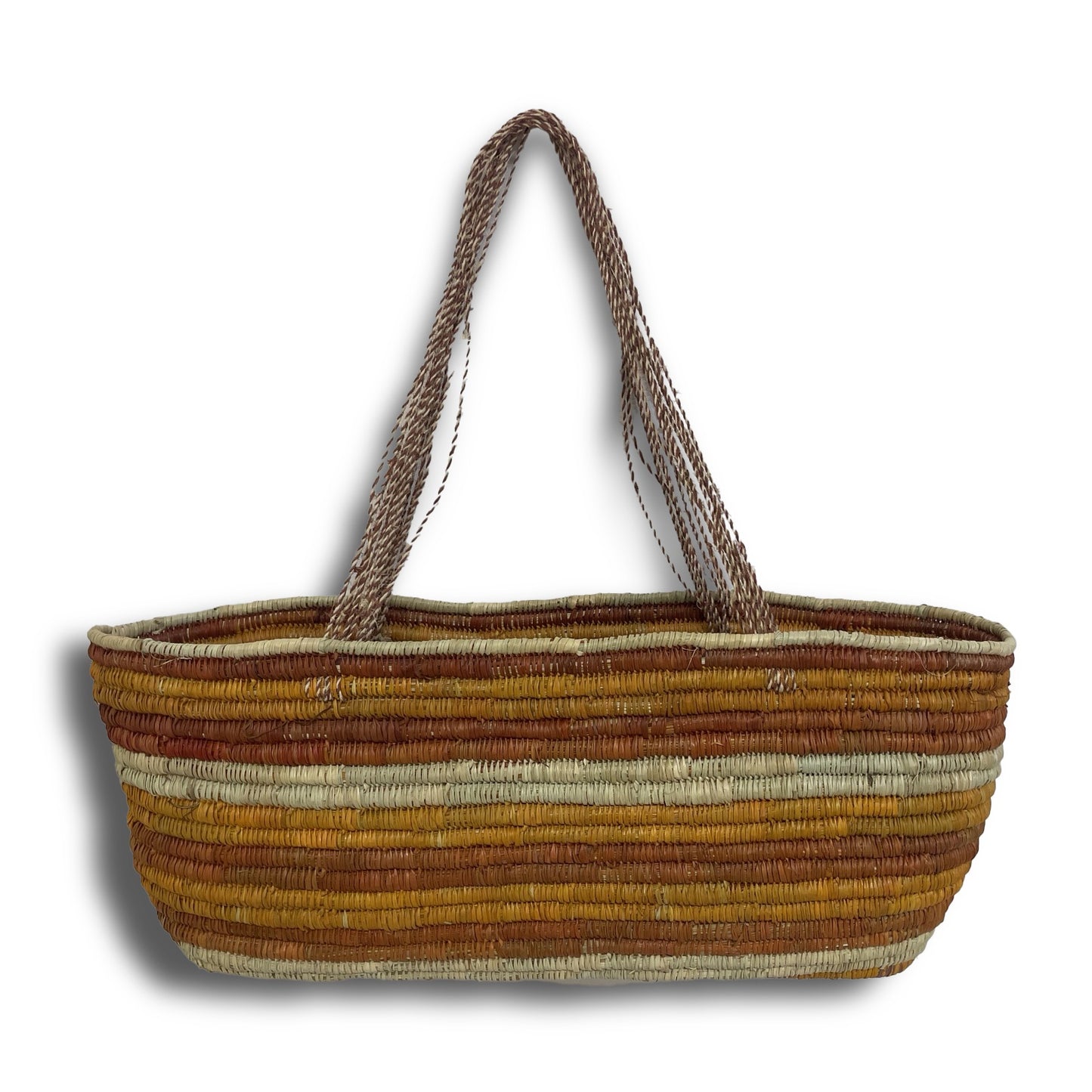APY Art Centre Collective
'Bathi (Pandanus Basket)' Margaret Djarrbalabal (Brown / Yellow)
'Bathi (Pandanus Basket)' Margaret Djarrbalabal (Brown / Yellow)
Couldn't load pickup availability
Share
All exhibition works are pickup only, available for collection from July 14th.
Yolŋu weavers of Arnhem Land create utilitarian, ceremonial, and decorative pieces using naturally sourced materials. This Bathi (Pandanus Basket) is made from young Pandanus spiralis leaves, harvested with a wooden hook, stripped of prickles, and dried to create strong, resilient fibres. These fibres are then twisted, coiled, or woven using various techniques to produce both functional and decorative baskets. Typically, Bathi are made using a coiling technique which was adapted from techniques used by Indigenous women throughout Southeast Australia. Introduced to Arnhem Land weavers in the 1930’s as Missionaries began commissioning pieces in this style. Bula’bula weavers exclusively use natural dyes, derived from locally sourced roots, leaves and grasses. These pigments are extracted and infused into pandanus fibres by boiling over an open fire, producing the rich, vibrant colours characteristic of contemporary Yolŋu weavings.
Dimensions: (H x W) 24cm x 58cm
Materials: Pandanus (Pandanus Spiralis), natural dyes
Tradition and contemporary practice are woven together like threads in a tapestry. Ghost net traps use ancestral weaving techniques, echoing the connection between land, sea, and community. Salvaged materials condemn the use of the plastic commercial fishing nets that litter the oceans. Weavings, lino printed fabrics and dillybags hang alongside carved sculptures and ceramics, each piece a trace of cultural lineage, Indigenous lore and identity. These objects are acts of cultural continuity that embody ecological wisdom and spirit passed down through generations. From the pandanus weavings of Injalak Arts to the fibre art from Maningrida, the diversity of materials and technique reflect the richness of Australia’s Indigenous cultures.


